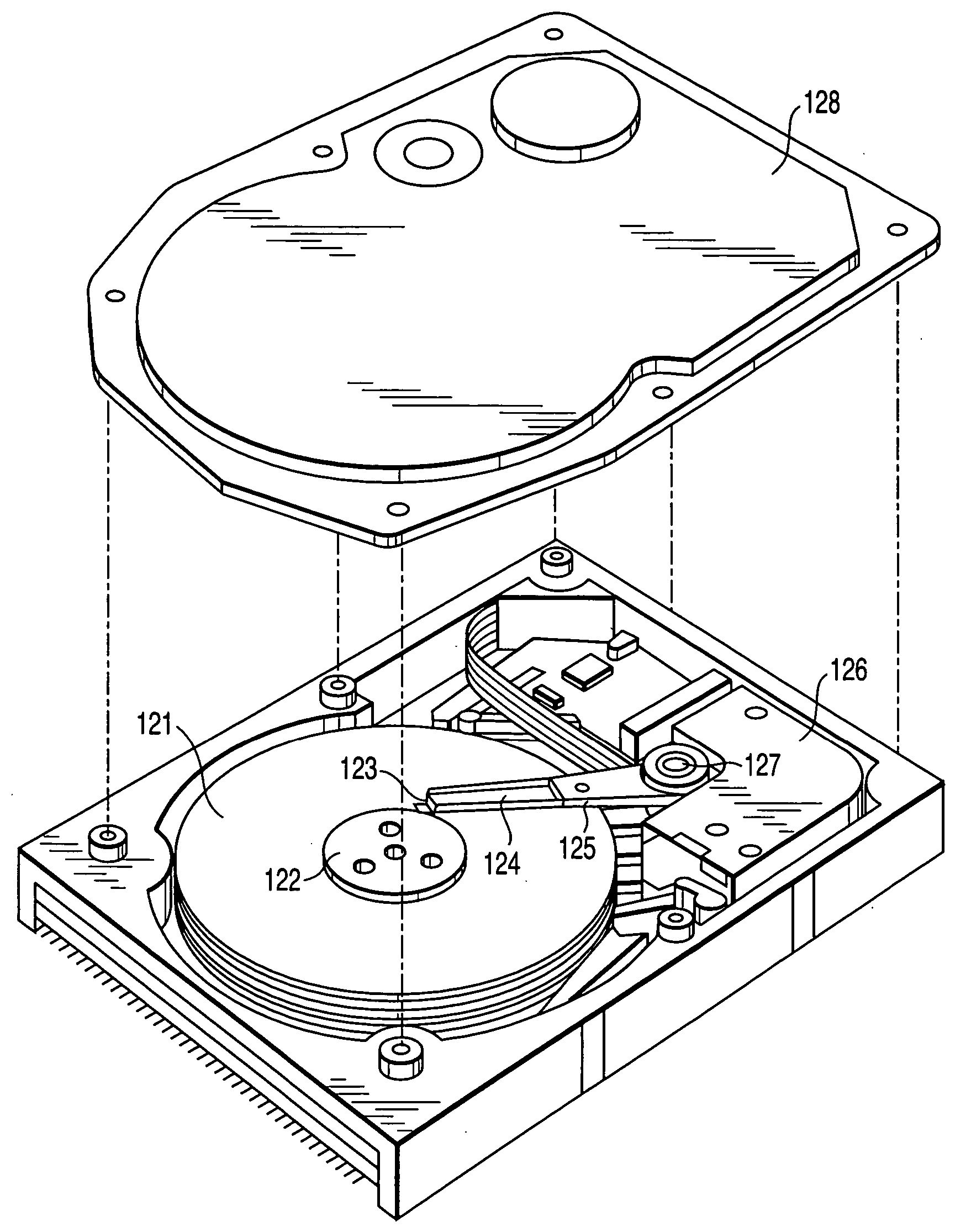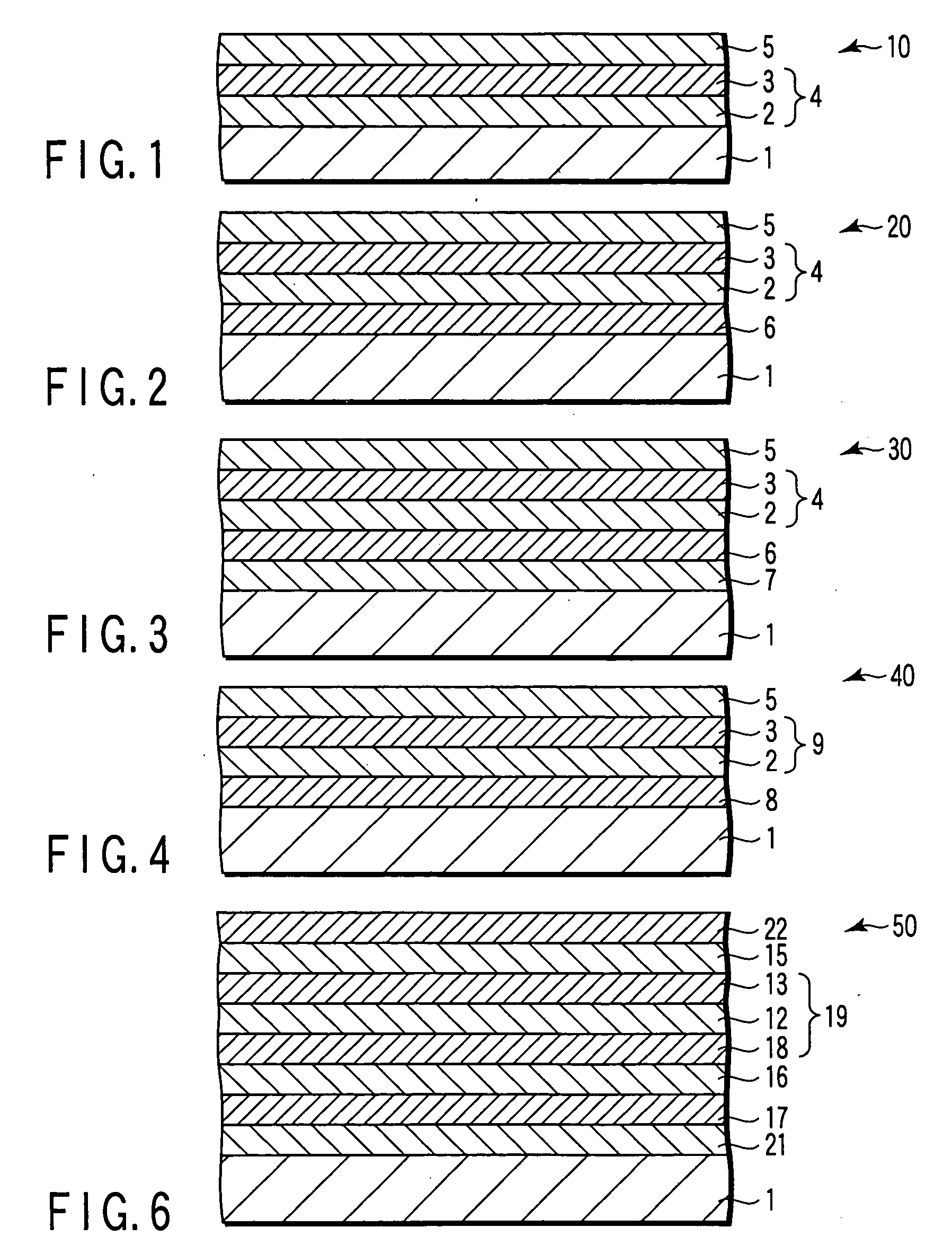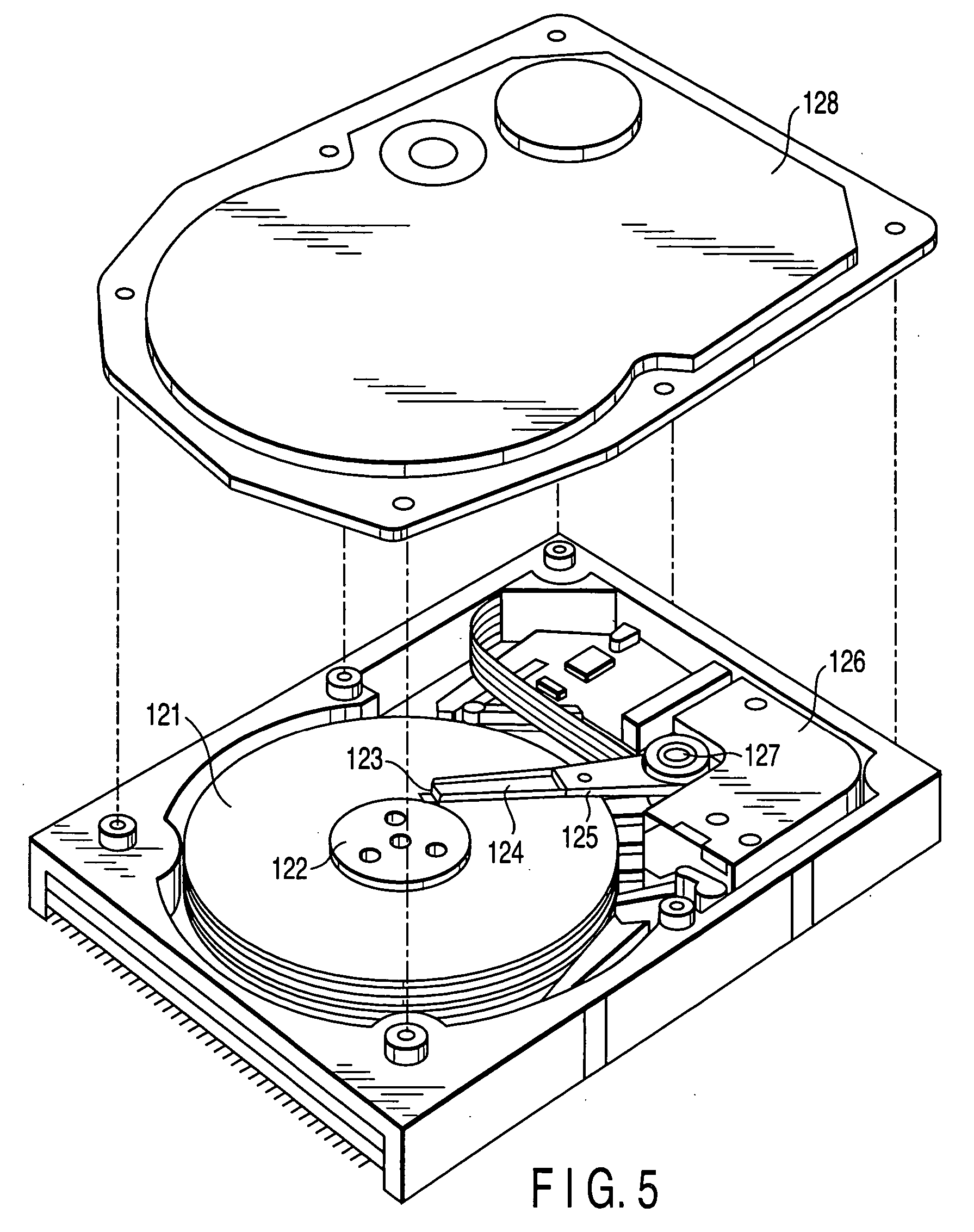Perpendicular magnetic recording medium and magnetic recording/reproducing apparatus
a technology of magnetic recording medium and magnetic recording, which is applied in the direction of magnetic recording, data recording, instruments, etc., can solve the problems of unsatisfactory effect of grain size reduction, inability to control the magnetic coupling between the magnetic layers, and strict requirements for the underlayer
- Summary
- Abstract
- Description
- Claims
- Application Information
AI Technical Summary
Benefits of technology
Problems solved by technology
Method used
Image
Examples
embodiment 1
[0098] As a nonmagnetic substrate, a disk-like cleaned glass substrate (manufactured by OHARA, outside diameter=2.5 in) was prepared.
[0099] This glass substrate was placed in a film formation chamber of a DC magnetron sputtering apparatus (C-3010 manufactured by ANELVA) The film formation chamber was evacuated to a base pressure of 2.times.10.sup.-5 Pa and heated to about 200.degree. C., and sputtering was performed as follows in an Ar atmosphere at a gas pressure of 0.6 Pa.
[0100] First, a 40-nm thick CrMo alloy layer was formed as a nonmagnetic underlayer on the nonmagnetic substrate.
[0101] On top of this nonmagnetic underlayer, a 40-nm thick Co-22 at % Cr-13 at % Pt hard magnetic layer was deposited to form a longitudinally oriented hard magnetic layer.
[0102] On this hard magnetic layer, a 250-nm thick Co-5 at % Zr-8 at % Nb alloy layer was formed as a soft magnetic backing layer. The resultant substrate was once taken out from the vacuum chamber into the air atmosphere.
[0103] The...
embodiment 2
[0124] To check the magnetism of a CoCrPtMo ferromagnetic underlayer and the influence of this magnetism on a perpendicular magnetic recording layer, a testing medium for evaluation by a vibrating sample magnetometer (VSM) was first formed.
[0125] In this VSM measurement, if a CoZrNb soft magnetic backing layer is also formed, not only the magnetization of a perpendicular magnetic recording layer but also that of this soft magnetic backing layer is measured. This makes it impossible to well evaluate the magnetic characteristics of a perpendicular magnetic recording layer having relatively small magnetization and a small layer thickness. Therefore, to obtain a surface temperature equivalent to that of the aforementioned medium for recording / reproduction characteristic evaluation during substrate heating, a 150-nm thick Ni-40 at % Ta layer and 10-nm thick C layer, instead of a longitudinal hard magnetic layer and soft magnetic backing layer, were formed in this order on a glass substra...
embodiment 3
[0142] A perpendicular magnetic recording medium was obtained following the same procedures as in Embodiment 1 except that no NiTa orientation control layer was formed.
[0143] The recording / reproduction characteristics of the obtained perpendicular magnetic recording medium were evaluated in the same manner as in Embodiment 1. Consequently, the S / Nm value at a linear recording density of 500 kFCI was 19.4 dB, i.e., the S / Nm value in Embodiment 1 was better.
[0144] Although this might be caused by the influence of the oxidized layer on the surface of the soft magnetic backing layer, the NiTa orientation control layer presumably reduced the medium noise by making the structure and magnetic characteristics of the CoCrPtMo ferromagnetic underlayer appropriate.
[0145] Another perpendicular magnetic recording medium was obtained following the same procedures as in Embodiment 1 except that an Ni-30 at % Nb layer was formed as an orientation control layer instead of the NiTa layer.
[0146] The r...
PUM
 Login to View More
Login to View More Abstract
Description
Claims
Application Information
 Login to View More
Login to View More - R&D
- Intellectual Property
- Life Sciences
- Materials
- Tech Scout
- Unparalleled Data Quality
- Higher Quality Content
- 60% Fewer Hallucinations
Browse by: Latest US Patents, China's latest patents, Technical Efficacy Thesaurus, Application Domain, Technology Topic, Popular Technical Reports.
© 2025 PatSnap. All rights reserved.Legal|Privacy policy|Modern Slavery Act Transparency Statement|Sitemap|About US| Contact US: help@patsnap.com



